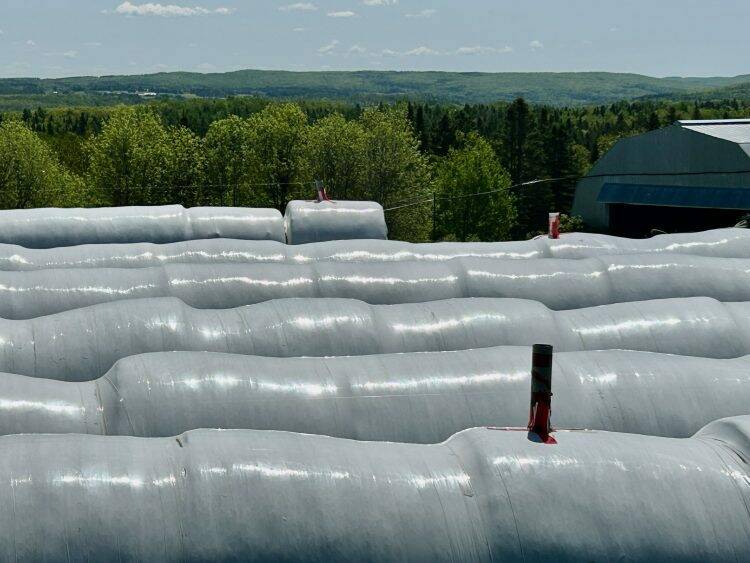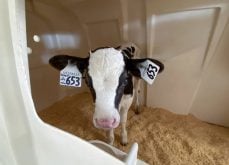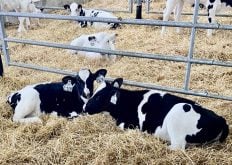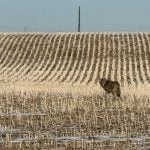At Ferme Denijos in Saint-Cyprien, in the Lower St. Lawrence region, Bryan Denis was struggling with crows that were tearing holes in the plastic wrapping of his silage bales.
Why it matters: When larger birds land on silage bales, their claws pierce the plastic, which can result in spoilage.
He used his ingenuity to solve the problem.
To discourage crows, he placed fishing lines above the rows of bales. As soon as the birds try to land, they get tangled in the line and refuse to come back.
Read Also
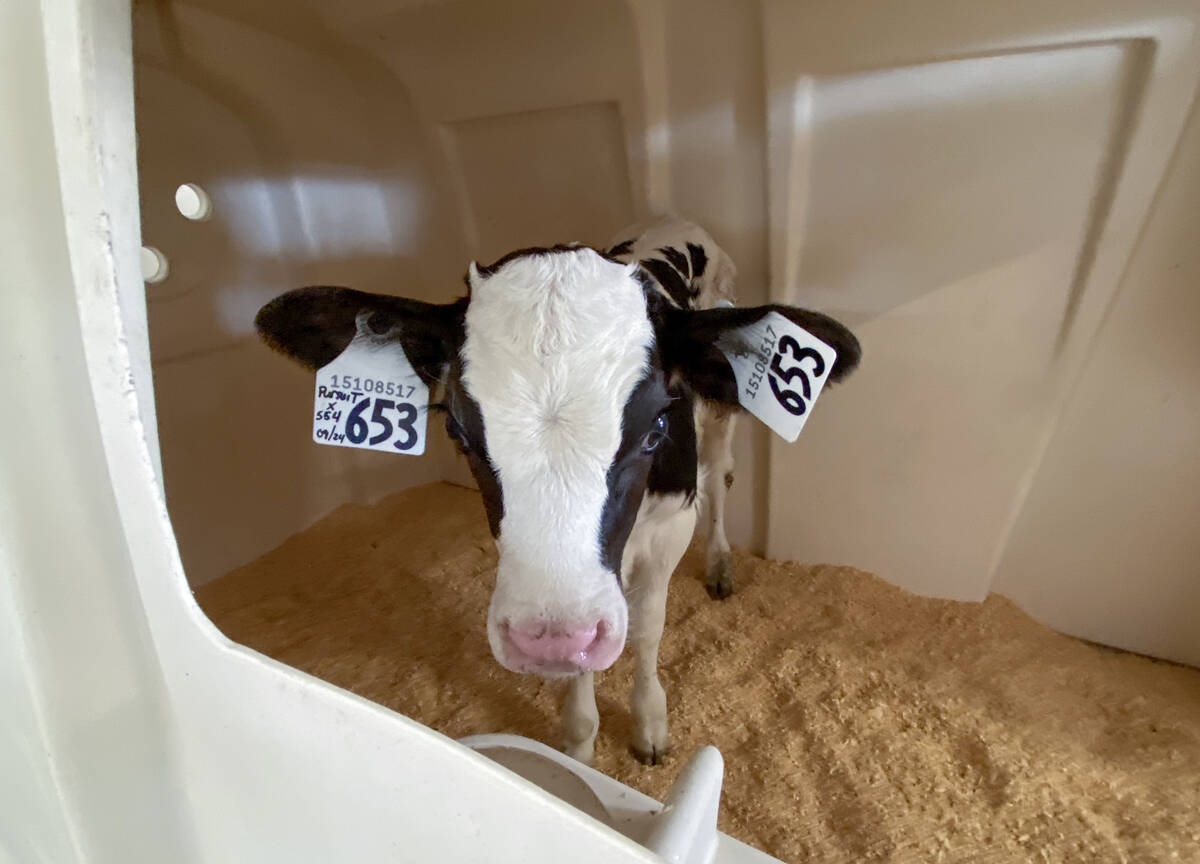
Lactanet turns methane expertise into business opportunity
Lactanet’s new fee-for-service breeding tool initiative to reduce greenhouse gas emissions in Canadian and Swiss Holstein herds will launch in April 2026.
To install the lines, 30-inch plastic silage wrapping cylinders were salvaged, cut in half, and taped to every 15 or 20 bales above the silage bag. A hole was drilled in the topmost part of the post, and a fishing line was attached.
“So when you put out the fishing line, especially for crows, they come to land and the line gets tangled in their feet,” said Denis.
“They don’t understand what’s happening. It scares them and they don’t come back afterwards.”
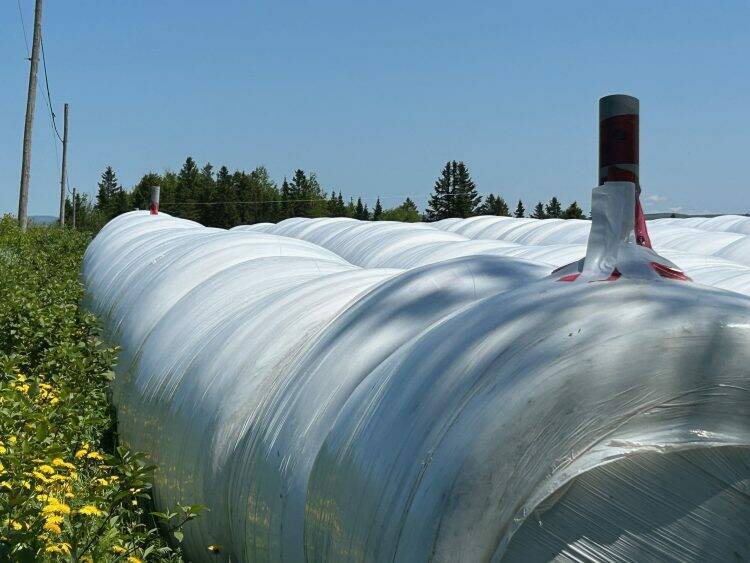
This simple action has reduced the rate of perforations in silage bags since the farm came up with this solution three years ago.
It works, but it takes time, said Denis. It’s not installed on all the rows, but only on those most frequented by birds, namely those at the ends.
Denis believes that birds choose these for better visibility and protection.
“That’s what we’ve noticed. It’s often the sausages at the ends that get attacked,” he said.
That’s why they install one on the first silage bag and another on the last silage bag made during the week before the next mowing. So, every three to four silage bags, there is a wire placed above the silage bags to keep the crows away.
Fishing line does not, however, solve problems created by voles and cats, said Denis.




